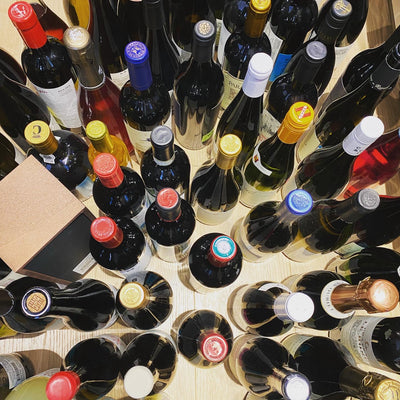Willamette Valley - Putting the Yay back into Chardonnay
Apr 02, 2025
As the looming tariffs threaten to disrupt the supply of classic European wines (or at least push prices up by 20%—yikes, especially for already-premium regions like Burgundy), we’re getting excited about something a little closer to home: the brilliant Chardonnays coming out of Oregon’s Willamette Valley.
If you tend to think of Chardonnay as the overly oaked "butterball" style of yesteryear, it’s time to revisit the grape. Willamette Valley is doing something completely different—and dare we say it?—it’s got a European sensibility. These Chardonnays are crisp, fresh, and electric. Even if there is oak on the wines, it is always subtle, integrated, and well-balanced. Whether you're a fan of Burgundy’s whites but find them increasingly out of reach, or simply someone who loves great wine, these Chardonnays deserve a place in your glass: They are balanced, lively, and absolutely worth discovering.
For those who haven’t yet had the pleasure, Willamette (which—fun fact—famously rhymes with damnit, a word many of us have likely muttered lately) is a stunningly picturesque valley that stretches from the southern suburbs of Portland down through Salem and on to Eugene. While it’s rightly famous for producing some of the world’s best Pinot Noirs, right now the wine world is buzzing about its Chardonnays. In fact, the excitement is so high that today many producers are even replacing their Pinot Noir vines with Chardonnay!
What’s driving all this enthusiasm? Well, if you're a fan of Pinot Noir, you already know the grape's roots are firmly planted in Burgundy, France—where it grows alongside Chardonnay. For decades, however, Chardonnay was virtually ignored in Willamette Valley in favor of Alsatian grapes like Pinot Gris. Why? Why has it taken so long for Chardonnay to really shine in the Willamette Valley? The answer, as it often is in wine, is a nuanced. But here’s the short version: clones!
You see, most of the times when grape vines are propagated, they start from budwood cuttings of mature vines which are planted in the ground and sprout roots, rather than starting from seed. These cuttings are considered clones of the mother plant.
When vineyards first began planting in Willamette Valley in the 1960s and 70s, the selection of Chardonnay clones suited to the region was limited. Sure, California had a lot of Chardonnay growing, but the vines there were built for warmer climates, not the cool conditions of the Pacific Northwest.
The game-changer: in the 1970s, after a standout performance of Eyrie Vineyards’ South Block Pinot Noir at a blind tasting in Paris, some Burgundy producers—most notably Joseph Drouhin—took notice of the potential of Willamette Valley. They brought with them fresh clonal selections from their cool-climate vineyards, and the rest, as they say, is history. These new clones made all the difference, and now, Oregon is in the midst of a Chardonnay renaissance.
There are a number exciting wineries making epic Chardonnays in Willamette right now, but special mention goes out to a few of our favorites on the shelf right now, including Walter Scott, Bethel Heights, 00, Martin Woods, and Big Table Farm. Speaking of Walter Scott, keep an eye out! We are getting ready to do an in-depth profile on them soon. They are a little under the radar right now, but we think they are making some of the most exciting wines in the Valley today.




